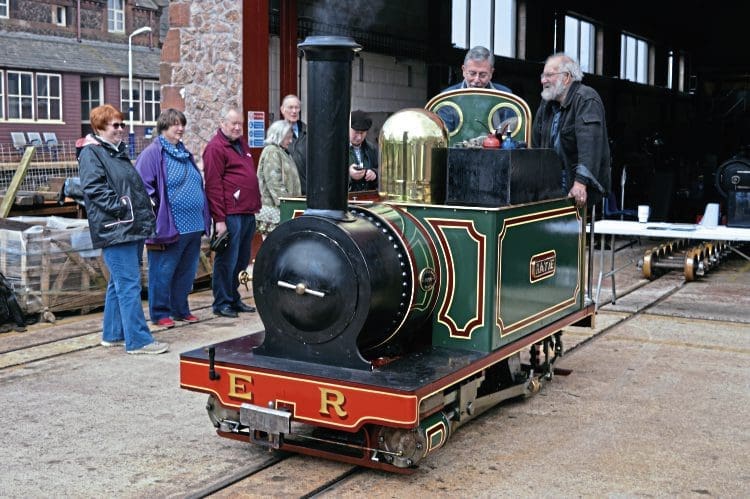Fifteen inches was considered to be the minimum practical gauge for a full-size as opposed to a miniature steam locomotive. Mark Smithers recounts the story of a pioneering engine of this gauge that barely survived but has now returned to steam.
In the 19th century, Sir Arthur Percival Heywood attempted to gain commercial acceptance for his functional rather than miniature 15in gauge railway system by means of his Duffield Bank Railway in Derbyshire.
By 1875 he had completed his first 15in gauge locomotive, Effie, an 0-4-0 well tank with outside cylinders, inside frames, equal leading and trailing overhangs and a boiler incorporating a cylindrical firebox (inspired by 18in gauge ‘Crewe Works’ practice). Six years later he produced his pamphlet, Minimum Gauge Railways, which accompanied the appearance of his second locomotive, Ella.

This locomotive continued the ‘equal overhang’ and cylindrical firebox principles found on Effie but added further refinements, substituting side tanks for well tanks (there was no room for the latter anyway), steam for hand braking, a valve gear derived from Brown and Hackworth principles, a
six-coupled outside-framed chassis for the four-coupled arrangement and a sleeved axle flexible wheelbase clearly derived from James Cleminson’s system for carriages and wagons.
Enjoy more Heritage Railway reading in the four-weekly magazine.
Click here to subscribe & save.
By 1881, Heywood had become very interested in promoting his system to the Royal Engineers for use as a field railway system and he would continue to make efforts in this direction until at least 1903. By 1885, however, the Royal Engineers had accumulated a varied collection of 18in-gauge locomotives ranging from the little Manning Wardle 0-4-0ST Burgoyne (No. 448 of 1873) to 14 0-4-2Ts of five designs by four manufacturers at its Chatham sites and Heywood’s efforts in this context were doomed to failure.
Nonetheless, further modifications were made to Ella during the years immediately following its completion, including combined hand and steam braking (the consequence of a steam tramway accident caused by the failure of a steam brake); steam sanding (dispensed with owing to sand fouling the moving parts), and by 1889, the fitting of what became the standard Heywood pattern of boiler with barrel and firebox diameters of 2ft 1in and 1ft 4in respectively, and 57 tubes of 13/8in diameter.
Read more and view more images in Issue 242 of HR – on sale now!
Advert
 Enjoy more Heritage Railway reading in the four-weekly magazine. Click here to subscribe.
Enjoy more Heritage Railway reading in the four-weekly magazine. Click here to subscribe.




